
5 Sneaky Ingredients to Avoid in your Oral Health Products
We would love to believe all oral care products are created equally safe and effective, but the truth is far less comforting.
While some conventional oral care products seem to work, at least at first, they typically only worsen (or cause) further issues, such as weak teeth and gum disease. Not only are they ineffective, but they may make your oral health worse.
And unfortunately, it's not just toothpaste. Take a cursory glance at any oral care products on the grocery store shelf, and you'll find toxins. These chemical cocktails are dangerous, and they're everywhere. It can feel like a hopeless task sifting through ingredient list after ingredient list, trying to understand the elaborate jargon (that's one of the first signs it's not good for you.)
So, we've done the hard work for you! Below are five of the most harmful ingredients lurking in conventional oral care products, plus a few (dis)honorable mentions.
Are you feeling overwhelmed? Make it easy for yourself and shop clean, fluoride-free, B Corp Certified oral care today!
Plastic Beads
Microbeads are used in conventional toothpaste as an abrasive agent to help scrub the teeth. Instead of cleaning, these small abrasive pieces damage tooth enamel, stripping the teeth of their natural protection. Microbeads can also be a severe hazard if swallowed.
As if scrubbing our mouths with plastic isn't harmful enough, every plastic we put inside our bodies (even if we don't swallow it) is chemically attached to other harmful substances our bodies are not meant to consume.
When plastics are made, they are combined with other chemicals to aid them in their intended performance. Components like dyes, additives, and fillers are intentionally and chemically bound to the plastic during manufacturing. Those toxins infiltrate your body systems upon usage where they can contribute to countless health conditions. (When it comes to kids, artificial food dyes are linked to numerous behavioral issues)
There are a lot of wild claims about plastic out there, but if even the tamest of claims is true, people ingest a debit card's worth of plastic per week. It's time to cut those unhealthy habits and skip out on plastics for more natural and effective alternatives.
Fluoride
Studies have uncovered some scary findings about fluoride, and it is now a confirmed neurotoxin. What does that mean? Like with exposure to heavy metals, higher levels of fluoride exposure can negatively affect brain function, including memory and learning.
When it comes to our families, any exposure to dangerous chemicals and neurotoxins is too much. Even in toothpastes claiming to use only small amounts, the risk is not worth it. Avoiding neurotoxins is especially critical during the intense developmental phases children constantly go through up until early adulthood.
Why are children at a higher risk for fluoride toxicity than adults? Adults have fully developed blood-brain barriers (BBB), which help their bodies filter out things that could negatively affect or alter the state of their brains. Therefore, a healthy adult body may effectively resist the toxicity introduced through fluoride exposure. A child, on the other hand, may not possess a fully formed BBB. Without this protection, their bodies are unable to filter out toxins and protect their developing brains. These harms make avoiding fluoride a no-brainer for our kids and, at best, an unnecessary risk for adults.
Parabens
These widespread toxins are finding their way into everything. Parabens are used as chemical preservatives and are very inexpensive for industries to use. At first glance, that seems fine, but these chemicals are toxic, and using them comes at a huge cost.
Parabens mimic estrogenic compounds. One 2017 study showed that excessive paraben exposure altered sexual behavior in female rats. Other studies suggest that parabens promote the growth of breast cancer cells. Parabens disrupt hormones and may even show harmful effects in newborns at birth. A 2019 study showed that girls born with paraben exposure weighed significantly less than girls who were not exposed.
To say the least, this isn't something we want in our mouths or bodies. Yet, parabens are so prevalent that they've been detected in nearly all Americans tested for it. In addition to oral care, parabens appear in shampoos, deodorants, lotions, makeup, and skincare, such as sunscreen.
Triclosan
Triclosan is an antibacterial agent included in conventional toothpaste to kill bacteria. (Unfortunately, it doesn't distinguish between good and bad bacteria.) However, this 'cleaner' agent comes with a host of issues. A study in The Journal of Clinical Endocrinology and Metabolism revealed a connection between triclosan and osteoporosis in women.
Another study showed that it negatively impacted immune systems in those under 18 (giving us yet another toxin that's especially threatening to our kids). It also increases the chance of things like eczema, allergies, and other inflammatory issues. Triclosan is an endocrine disruptor, a suspected carcinogen, and can damage reproductive hormone function. It's even a known toxin to water life. If it's too harmful for animals, there's no reason it should be near our children.
Triclosan is frequently used in personal care products such as toothpaste and body soaps, but it can also be found in other daily-use items, such as toys and clothes.
Aspartame
This artificial sweetener is found in thousands of products throughout the U.S. Despite its controversial status, aspartame is still frequently used. Studies have linked aspartame consumption to health concerns such as headaches, poor memory, and depression.
A 2014 study revealed that higher intakes increased depressive levels and mood swings. Lower intakes were still very much linked to a negative effect on cognition. Besides poor memory, aspartame has also been linked to seizures, multiple sclerosis, tumors, and diabetes, making it another ingredient we should avoid whenever possible.
Aspartame is one of the most common artificial sweeteners used in conventional toothpaste. Still, it's also a staple sweetener in many sugar-free or low-sugar products, including sodas and chewing gum.
(Dis)Honorable mentions
Propylene glycol is another common toothpaste ingredient linked to seizures. It is a vehicle for delivering many substances but has adverse effects on our health. This antifreeze (yes, you read that correctly: antifreeze) breaks down and processes as formaldehyde in our bodies, a harmful chemical that can cause respiratory issues and inflammatory responses on the skin. It can even be fatal. Propylene glycol may also contribute to central nervous system problems and comas. It is especially dangerous for infants.
Artificial colors are another ingredient to avoid. Although many have been banned, there are a few that remain widely used. Studies have linked artificial colors to cancer, allergies, and behavioral issues (like ADHD and hyperactivity), especially in kids.
Sodium Lauryl Sulfate (SLS) is a commonly used foaming agent in toothpaste. However, SLS can be irritating to the delicate tissues of the mouth and has been known to cause canker sores.
A Safe Oral Health Alternative
We want the very best for our children. We want effective personal care products without risking the safety of those we love most. We don't want ourselves or our kids to be exposed to toxic, damaging chemicals, and there's absolutely no reason why we should have to be. The only remaining issue is finding alternatives.
And if you've made it this far, we have great news for you! We've searched, tested, and experimented to provide you and your family with safe, clean, effective oral care products you'll love.
Our Whitening Toothpaste contains an all-natural ingredient list that is safe for the entire family (even pregnant mothers). It contains hydroxyapatite (a natural mineral in dental enamel), green tea, and neem oil. That's a powerful combination of all-natural antimicrobial, anti-inflammatory, and antioxidant ingredients. The result? Stronger teeth, improved breath, happier gums, and a brighter smile.
And if mint isn’t your thing or you’ve got kiddos at home, our Strawberry Toothpaste contains the same powerful ingredients but with a fruity twist!
The best part? Our formulas are safe for you, your family, and the planet. How's that for oral care?
RESOURCES
1. Campanale, C., Massarelli, C., Savino, I., Locaputo, V., & Uricchio, V. F. (2020). A Detailed Review Study on Potential Effects of Microplastics and Additives of Concern on Human Health. International journal of environmental research and public health, 17(4), 1212. https://doi.org/10.3390/ijerph17041212
2. Grandjean, P. Developmental fluoride neurotoxicity: an updated review. Environ Health 18, 110 (2019). https://doi.org/10.1186/s12940-019-0551-x
3. Wells, Katie. (2020, May 17). 10 Toxic Ingredients to Avoid in Personal Care Products: Wellness Mama. Retrieved December 18, 2020, from https://wellnessmama.com/426233/toxic-ingredients/
4. Chang, C., Wang, P., Liang, H., Huang, H., Huang, L., ChangChen, H., Pan, W., HanLin, M., Yang, W., FangMao, I., & LienChen, M. (2019). The sex-specific association between maternal paraben exposure and size at birth. 222(6), 955-964. https://doi.org/10.1016/j.ijheh.2019.06.004
5. Barr, L., Metaxas, G., Harbach, C., Savoy, L., & Darbre, P. (2012). Measurement of paraben concentrations in human breast tissue at serial locations across the breast from axilla to sternum. https://onlinelibrary.wiley.com/doi/full/10.1002/jat.1786
6. The Journal of Clinical Endocrinology & Metabolism, Volume 104, Issue 10, October 2019, Pages 4531–4538, https://doi.org/10.1210/jc.2019-00576
7. Clayton EM, Todd M, Dowd JB, Aiello AE. The impact of bisphenol A and triclosan on immune parameters in the U.S. population, NHANES 2003-2006. Environ Health Perspect. 2011 Mar;119(3):390-6. DOI: 10.1289/EHP.1002883. Epub 2010 Nov 29. PMID: 21062687; PMCID: PMC3060004.
8. Lindseth, G. N., Coolahan, S. E., Petros, T. V., & Lindseth, P. D. (2014). Neurobehavioral effects of aspartame consumption. Research in nursing & health, 37(3), 185–193. https://doi.org/10.1002/nur.21595
9. Lim, T. Y., Poole, R. L., & Pageler, N. M. (2014). Propylene glycol toxicity in children. The journal of pediatric pharmacology and therapeutics : JPPT: the official journal of PPAG, 19(4), 277–282. https://doi.org/10.5863/1551-6776-19.4.277



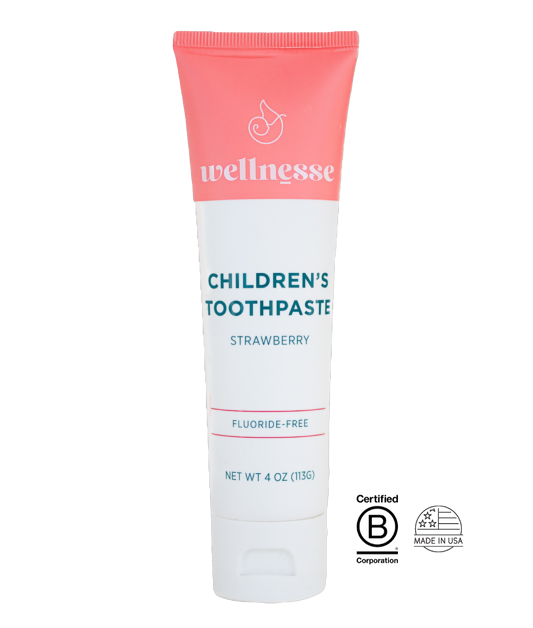
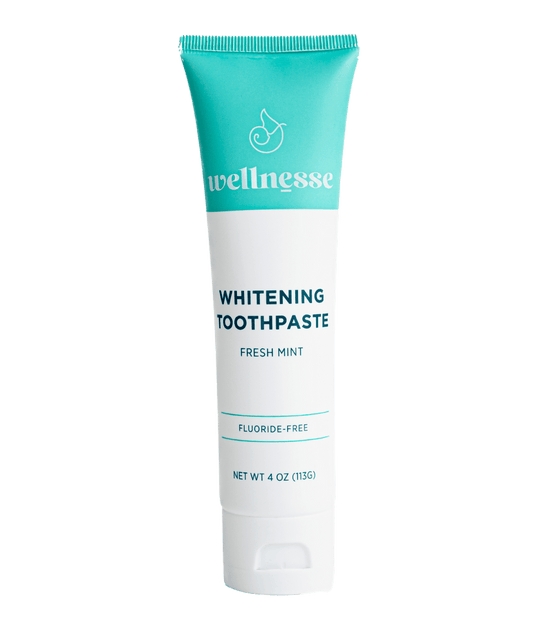
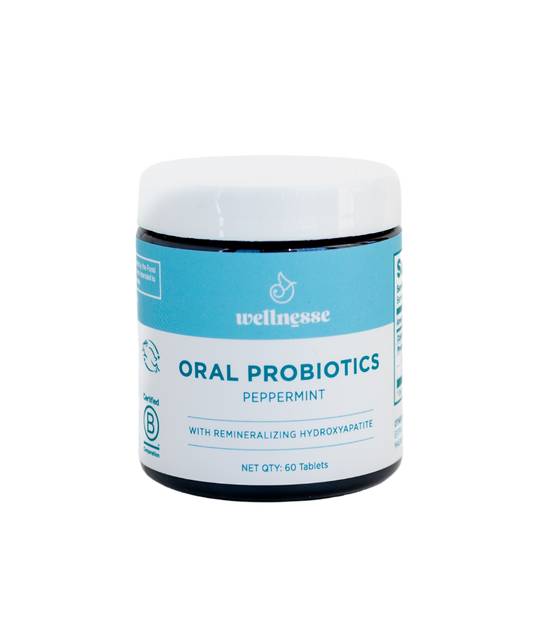
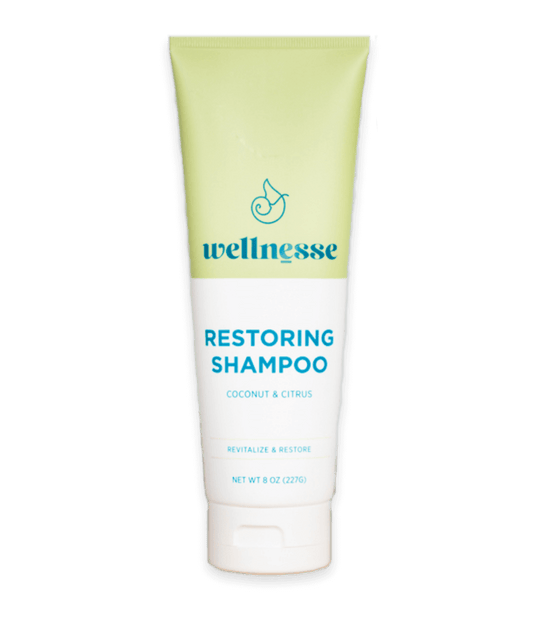
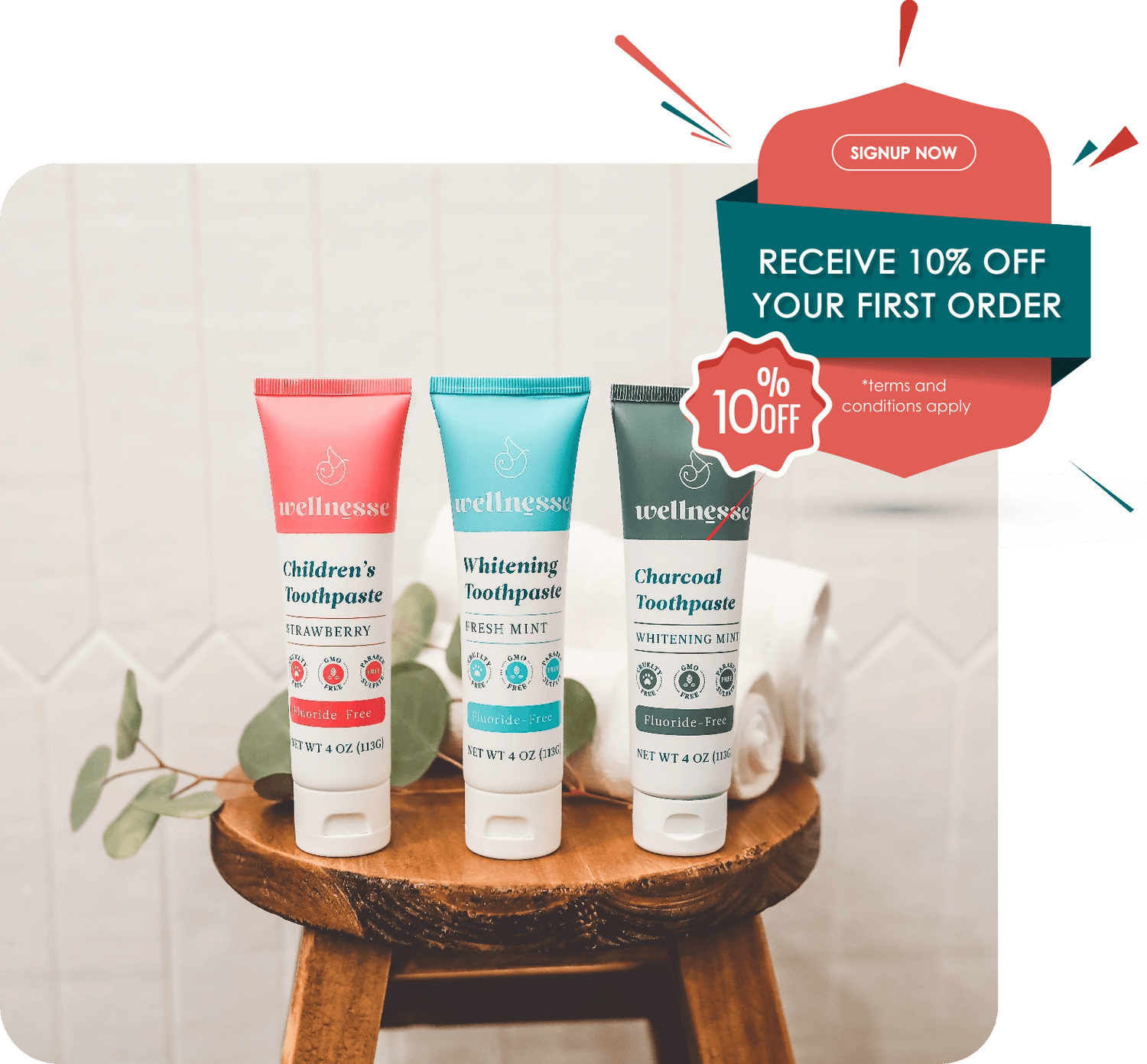
3 comments
Great article! Do you have recommendations for natural whitening strips?
Hi my name is Mirna I suffer from hishimoto desease which toothpaste will you recommend for me?
Does this product prevent tooth sensitivity? I have many dental issues, including sensitivity, sequelae of a gunshot to my face in 1960